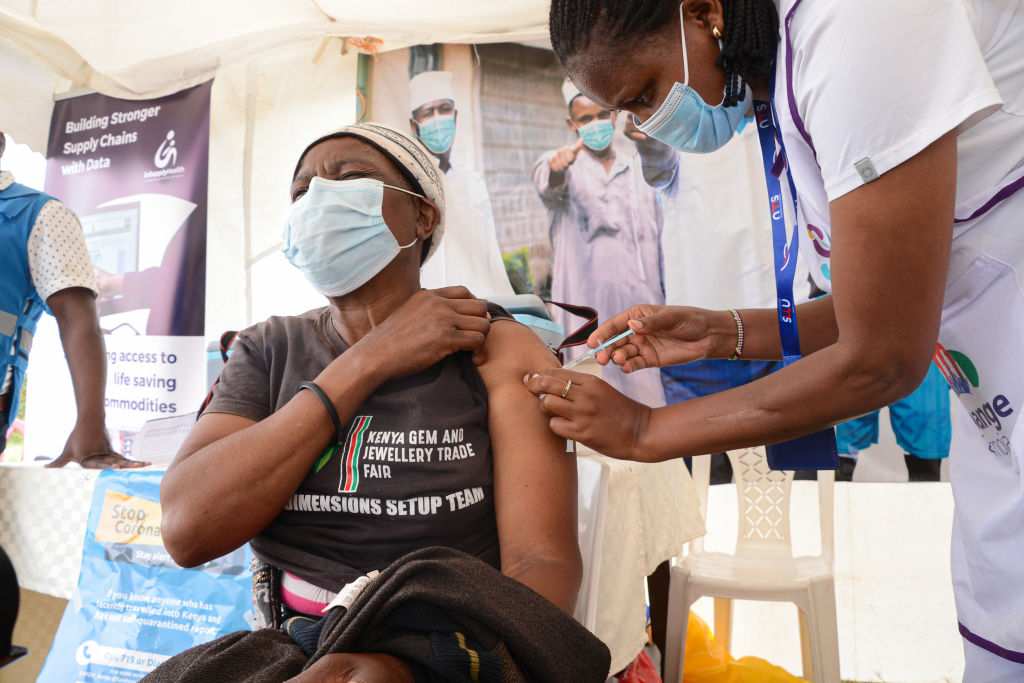Five Years After COVID-19: Ongoing Challenges for Women and Girls in the Global South

The COVID-19 pandemic turned the world upside down five years ago, impacting every aspect of our lives. While many regions have moved forward, the scars of the crisis remain deeply embedded in the lives of women and girls in the Global South. As we observe World Health Day on April 7, we must confront these ongoing struggles and call for immediate action.
The pandemic did not introduce the systemic inequalities that shape our world, but it certainly exacerbated them. Vulnerable women and girls have faced the harshest consequences of the political, economic, and social fallout. This “shadow pandemic” unfolds in ways that may be overlooked by some, yet are impossible to ignore for those experiencing its effects firsthand. Gender-based violence, economic hardships, and reduced opportunities continue to hinder progress toward gender equity, demanding a global response.
Lockdowns led to a distressing rise in sexual and gender-based violence (SGBV), leaving women and girls trapped in perilous situations. For instance, domestic violence calls in Kenya surged by 34 percent within the first three weeks of the national curfew. Unfortunately, the impact of these traumatic experiences extends beyond the end of restrictions, disrupting education, economic stability, and the lives of many survivors who still lack adequate support for healing.
Moreover, the pandemic triggered a worrying increase in teenage pregnancies. In South Africa’s largest province, births to teen mothers surged by 60 percent between the start of the pandemic and August 2021. Similarly, in Uganda, teenage pregnancies among schoolgirls rose by 30 percent by October 2021. In Kenya, high school girls out of school for just six months during lockdown were twice as likely to become pregnant, and three times as likely to drop out permanently compared to their counterparts who graduated before the pandemic. For many, pregnancy signified an abrupt halt to their education and a future riddled with limited options.
The crisis also intensified the prevalence of child marriages, as families facing economic hardship often felt compelled to marry off their daughters for dowries that could alleviate financial strains. With restricted access to reproductive healthcare, girls found themselves caught in a devastating cycle of early pregnancies and forced unions. Experts estimate approximately 10 million more girls risk becoming child brides by 2030 due to COVID-19, perpetuating cycles of poverty and limiting education and economic opportunities.
The economic toll on women has been monumental. In 2021, UN Women indicated a 9 percent increase in the poverty rate among women, reversing years of hard-won progress toward gender equality. Projections for 2030 suggest that for every 100 men aged 25 to 34 living in extreme poverty, there will be 121 women. A report from McKinsey & Company suggests that failing to address the pandemic’s negative impact on women could result in a $1 trillion loss in global GDP compared to a scenario where men and women were equally affected.
Communities that already grappled with deep-rooted inequalities prior to the pandemic are still suffering its effects. Yet, a significant obstacle in understanding the full scale of these issues lies in the lack of comprehensive and longitudinal data on the long-term impacts of COVID-19 on women and girls in the Global South. Those of us working on the ground see these challenges daily, but conveying the true extent of this crisis without macro-level research is a daunting task.
Years later, we still lack clarity on the pandemic’s complete impact on education, economic resilience, healthcare access, and gender equality. Until we prioritize dedicated research, we risk underestimating the crisis and potentially failing to effectively address its long-lasting consequences.
Additionally, recent cuts to U.S. global health and foreign aid funding exacerbate these challenges. The U.S. has historically been a major donor for health initiatives in lower and middle-income countries, contributing 30 percent of health assistance, equivalent to $8.3 billion annually in recent years. However, recent funding cuts have severely compromised health programs in the Global South, further endangering women and girls’ welfare.
As global leaders convene this year—from the United Nations Commission on the Status of Women in New York to the World Economic Forum in Davos—there are discussions around meeting the UN’s Sustainable Development Goals by 2030. Nevertheless, many overlook the far-reaching setbacks the Global South continues to face in advancing all 17 goals due to the pandemic. Without targeted and sustained interventions, these goals will remain unattainable, further isolating the Global South.
It is imperative for governments, donors, and global institutions to commit to ongoing research and funding for programs that uplift and empower marginalized communities. Without sustained investment, the crisis will deepen, eroding hard-won achievements in gender equality.
Women-led and community-based movements are crucial in addressing the ongoing challenges posed by the shadow pandemic. Organizations like Kakenya’s Dream understand the nuances of these issues in ways that external entities often cannot. Investing in grassroots solutions serves not only as a moral imperative but as the most effective path to create real, lasting change.
Although the world may have moved on, the implications of the pandemic continue to shape the daily lives of millions of women and girls. We must do more to ensure they are not left behind in our collective recovery.


